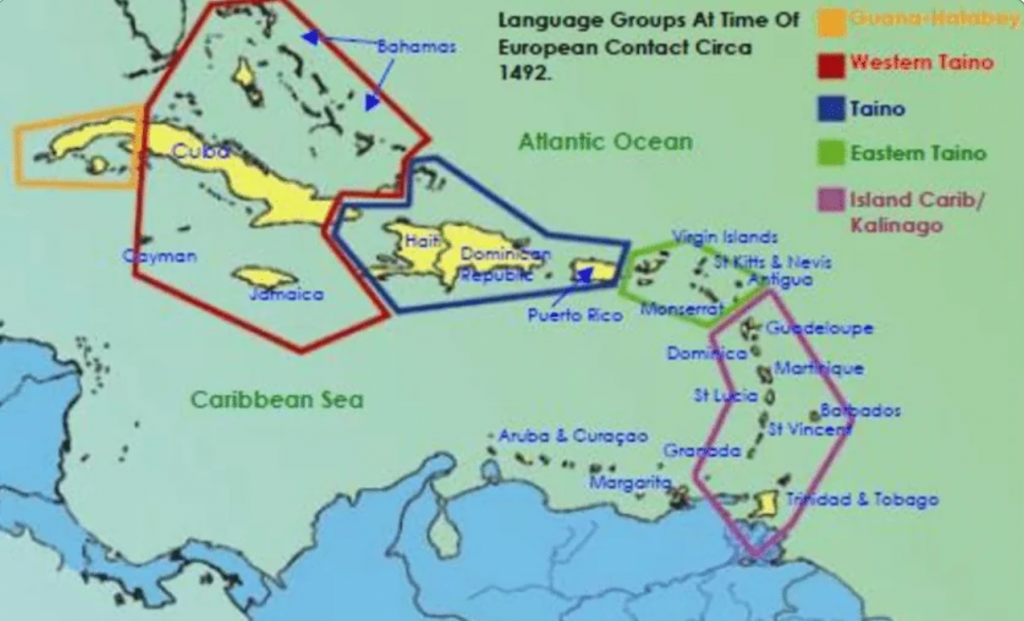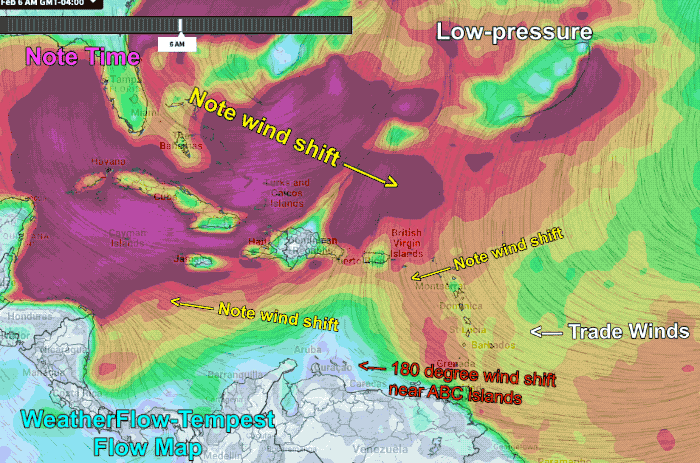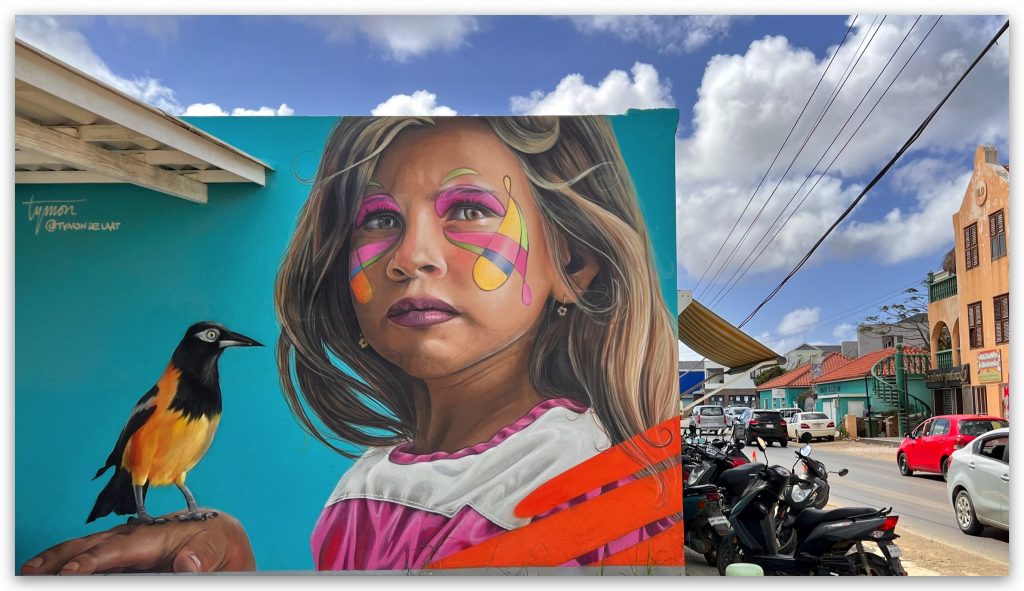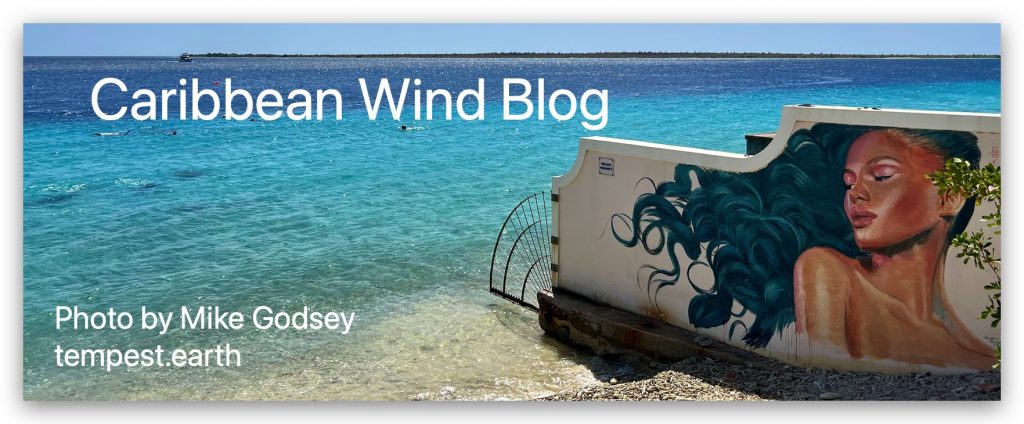
In 1492, Christopher Columbus, driven by his ambition to chart a westward route to Asia, set sail from the Canary Islands with three ships.
Relying on the steady easterly trade winds of the North Atlantic high-pressure system, his crew made landfall on October 12th on an island in the Bahamas. Though Columbus believed he had reached the Indies, he had actually stumbled upon a previously unknown continent.
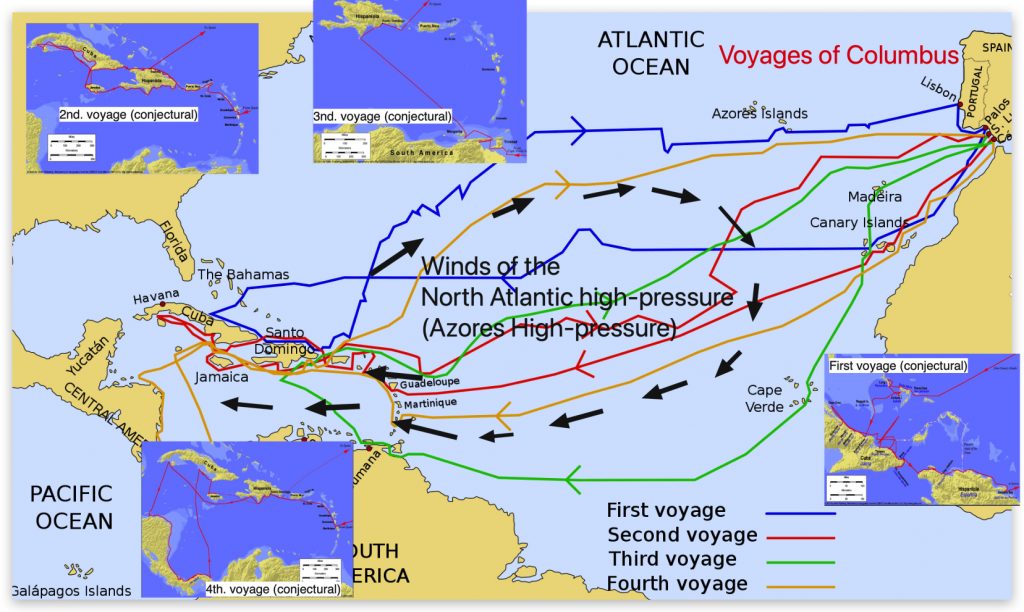
Note how Columbus's routes used the easterly Trade Winds to get to the Caribbean and its the westerly winds to return to Spain. Given the poor pointing abilities of his primitive square riggers it is unlikely his voyages would have been possible without the winds of the North Atlantic high-pressure.Although not until his later voyages (1493-1500) did he reach the wider Caribbean Sea, exploring areas from Puerto Rico to coastal Venezuela and Trinidad.
It’s crucial to remember Columbus was actually a late comer! Indigenous communities had already
been utilizing the Trade Winds and inhabiting Caribbean islands for millennia.
Columbus found almost all of the Caribbean islands inhabited by the Taíno, a peaceful agricultural
society with thriving cultures. DNA studies show that long before Columbus used the Trade Winds Indigenous people had left the Amazon Basin and/or the Andes using the Trade Winds and dugout canoes to discover and populate Caribbean Islands.
The same studies found no sign of inbreeding in the DNA of ancient Caribbean individuals. There is only one way island populations on small island could avoid this inbreeding – extensive voyaging between distant islands resulting in genetic diversity. Beyond genetic diversity the Trade Winds enabled the establishment of vast networks for exchange between islands.
Archaeological evidence, such as pottery and tools, show that Indigenous people used Trade Winds to develop Caribbean trade routes connecting islands from the Greater Antilles to the Lesser Antilles and even reaching the South American mainland.
Depending on the season, food availability and favorable Trade Winds direction some groups practiced seasonal migration, utilizing the these winds to travel between distant islands in search of resources. For example, fishing communities might follow fish migrations or move to islands with ripe fruit harvests.
The question is how did they make such long voyages
Few remains of Caribbean voyaging canoes remain due to the tropical moisture, hurricane damage and fast rot of wood canoes. The the historical record shows that canoes and voyaging were a major factor

in these maritime societies. Beyond commerce canoe voyaging across the Trade Winds were used to follow fish migration, pilgrimages to sacred sites and gatherings for cultural events. So Indigenous people utilized the predictable flow of the trade winds for safe and efficient travel.
While the trade winds were reliable they could also pose challenges for single hull canoes. During the hurricane season, travel became dangerous and when storms pass to the north the Trade Winds can fade or switch to an unfavorable direction.
The only way large open stretches of water, like the Windward Passage between Cuba and Hispaniola could be traversed safely would but through an in-depth understand of the Trade Winds.
Since the Trade Winds are nearly a constant factor in the Caribbean the Indigenous people had to have had extensive local knowledge of these the Trade Winds and especially the Hurricane season.
During the summer the Trade Winds in most of the Caribbean, especially on the eastern edge of the sea has constant easterly winds. So long voyages with the winds on the bow or abeam would have been very difficult in paddle powered canoes.
But winter would have been a different story. As low-pressure system pass to north the Trade Winds can switch direction very rapidly as you see in this February 1, 2024 animation. Notice the fast winds shifts in various parts of the Caribbean. The storms creating these shifts were moving fast today so the wind shifts were brief. But storms often move slower creating longer, sometimes favorable wind shifts. It is likely that Indigenous people learned to recognize that clouds and cooling meant certain trade routes would have more favorable winds.
The ancient Pacific Polynesians made far longer voyages due to the often vast distances between islands. Plus they had to cover ocean waters often without reliable Trade Winds. This led to their developing single and double hulled outrigger canoes with ingenious sails. But the islands of the Caribbean are much closer together so there would not have been as strong an incentive to develop more sea worth vessels.
Excavations across the Caribbean haven’t unearthed any concrete evidence of outrigger systems, such as outrigger booms or supports, or masts for sails. While dugout canoes and paddles have been found, these typically exhibit designs consistent with single-hulled vessels without sails. The canoes seemed to have been mostly made of locally available Spanish
Cedar or White Cedar or Balsa which are easy to hollow out and make canoes but they are weak and decay rapidly. Voyaging from island to island through the Trade Winds would demand expertise in such fragile paddle propelled vessels.

The encounter between Columbus and the Taíno marked a turning point in Caribbean history. The Trade Winds made it easy for Europeans develop the resources of the Americas and also to dominate and bring a profound transformation for the Indigenous peoples of the Caribbean.
It’s important to remember that this encounter was not peaceful, but rather one of conquest and colonization with devastating consequences for the Taíno and other Indigenous groups.
The arrival of Europeans brought devastating diseases like smallpox and measles, for which the Taíno had no immunity. This resulted in widespread epidemics and rapid population decline. Estimates suggest that within 50 years, over 90% of the Taíno
population perished…The Trade Winds endured.
Future blogs in this series will talk about:
- Seasonal variations in the Trade Winds
- The first humans to use the Caribbean Trade Winds.
- Island topography and Trade Wind strength
- The Trade Winds and island climates
- Ocean currents and topography
- Local currents and wind direction and strength.
- Street clouds and Trade winds.
- Hurricane paths and the Caribbean trade winds
- Gulf of Tehuantepec gale force winds and the Caribbean Trade Winds
- Why the trade winds often blow all night.
- Why Bonaire is a windsurfing, kiteboarding and winging mecca.
- Why Lac Bay on and Atlantis Beach on Bonaire are so windy.
- What shapes the Bonaire water currents that impact SCUBA divers.
- Where does all that air from the Trade Winds go?
- West Coast Wind Blog: Epic winds caused by the Gorge venturi and cold front.
- West Coast Wind Blog: Good wind recipe today for Baja’s East Cape, but lacking truly hot south-of-the-border wind zing!
- West Coast Wind Blog: What does the term “Wind Pulse” mean in the forecast?
- West Coast Wind Blog: Big Eddies vital anatomy
- West Coast Wind Blog: Late-season NW winds along the coast and at San Francisco sites near the Pacific.


